




In 1923 writer, dancer and choreographer Nellie Campobello arrived in Mexico City. Campobello produced a body of literary work consisting of poetry and short-story collections, from Cartucho (1931) to Los manos de mamá (1937). Both first-person accounts of conflict, Campobello’s writing is vivid and accessible. I fell in love with her writing before coming to Durham, inspiring my very first article for Palatinate if you’re willing to dig deep enough on the website. It’s an understatement to say that a lot has changed since that first article, though my love of Campobello remains.
It’s an odd time to work in the arts, let alone arts journalism. STEM is supposedly the future, and my history degree doesn’t seem to be quite cutting it. It goes without saying that I’ve doubted my investment in the industry on countless occasions. My brain dips between disillusionment with the concept of art criticism, fear about limited job security, and the self-doubt inherent in any uncertain post-graduation plans.
Despite all these concerns, it oddly doesn’t take that long for me to remember why I love the arts. Take me to a cinema, gig, gallery, second-hand bookshop or theatre, crowded with people who’ve put their phone screens aside for several hours of pure, unadulterated fascination, and I’m hooked.
It’s cinema that really stole my heart at
Features (page 3), Film & TV (page 4), Music (page 5), Style (pages 6 & 7), Stage (page 8), Interview (page 9), Travel (page 10), Books (page 11), Creative Writing (page 12), Food & Drink (page 13), Visual Arts (pages 14 & 15), Photography (page 16).
Indigo logo: Adeline Zhao
Cover image: Anna Kuptsova
Artwork of the week: Annie Park
Durham. Frequent trips to Gala or Newcastle’s Tyneside Cinema provided an important reminder of the arts’ uniting power post-pandemic. It was therefore worrying to discover that the latter establishment is struggling financially and facing potential closure. Founded in 1937, the same year that Campobello published Los manos de mamá, Tyneside Cinema is imbued with history, providing the perfect spot for independent and world cinema. Whilst fundraising plans will hopefully ensure Tyneside’s survival, it’s a stark reminder that the current social climate has thrown the arts into flux.
However, in spite of the jokes about my supposedly inevitable unemployment, I’ll take my movies any day of the week. As I make plans for the future, it’s time to move on in good spirits.
My love of the arts has only been enhanced by my time at Palatinate I’ve seen the paper’s leadership shift over my two and a half years on the editorial board, and every Editor-in-Chief I’ve worked under has been di erent but equally brilliant. Working as Indigo Editor these past two terms has been a pleasure. Thank you to Cameron, Nicole, Dan, Emily and the whole Indigo team who’ve all been so supportive and such good friends. It’s made entering a world of uncertainty seem much less daunting. I’d also like to thank all my non-Pal friends (especially my housemates) who have to deal with me constantly going on about the paper. Their obsession with the Puzzles page has practically kept our print cycle afloat…
This final print edition of the year is packed with summer inspiration and nostalgia. From a deep-dive into the Student Art Prize provided by Visual Arts, to Books’ analysis of Durham’s reading habits, there’s definitely something for everyone. On behalf of Indigo’s editors, I hope you enjoy it.

Cameron and I would also like to take the opportunity to thank graduating members of Indigo’s editorial board. Melissa, Theo, Annie, Ruhee, Caitlin, Isabella, Tom, Eve, Siobhan, Roshni and Alice – you’ve all been outstanding. Indigo would not be such a brilliant hub of creative writing, books, style, music, food, features and film without you.
Artwork of the week: Annie Park
Charlotte Grimwade, Cameron Beech, Melissa Rumbold, Roshni Suresh Babu, Siobhan Eddie, Elizabeth Buckley, Theo Mudhir, Amelie LambieProctor, Ayasha Nordiawan, Rae Rostron, Lydia Doye, Lily Lake, Ruhee Parelkar, Annie Pickup, James Macfarlane, Camille Hine, Alice Purves, Jacob Dax Harris, Lotte Micklethwaite, Charlotte Rodney, Isabella Harris, Tom Harbottle, Millie Adams, Eve Kirman, Elif Karakaya, Caitlin Ball.

www.palatinate.org.uk
Follow our socials Facebook: www.facebook.com/palindigo Instagram: @indigo.palatinate
Have a question, comment or an article idea? Email us at indigo@palatinate.org.uk or any Indigo section email address
features@palatinate.org.uk
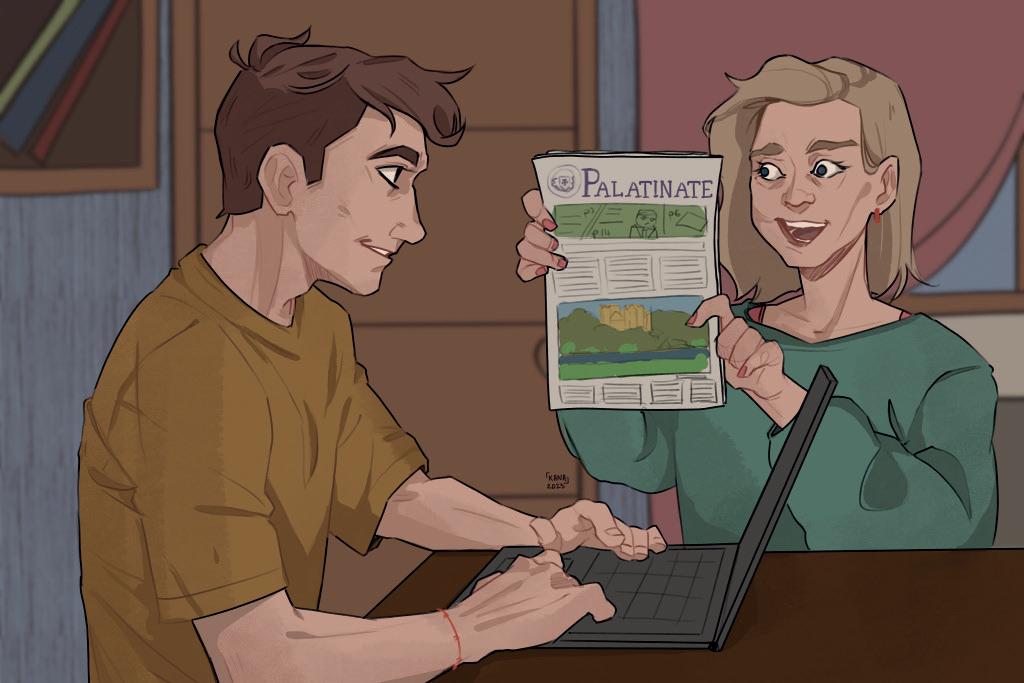
Iwill always remember the first article I wrote for Palatinate I was an apprehensive fresher, lacking all the experience that makes freshers, well, freshers. I was part of the cohort that started university during a global pandemic, and although at the time this didn’t seem like the brightest idea, if I look back now it was actually the best decision in disguise. At a time when socialising outside of your household was prohibited, freshers’ week was on Zoom, and the days consisted of endless rounds of UNO in a kitchen that reeked of mouldy bins and alcohol, I had no wider university experience. No societies or sports could run e ectively, and I didn’t know Durham had a student newspaper, let alone that I could write for it.
So, during my second term –spent in my childhood bedroom due to Covid restrictions – I spontaneously submitted an essay for a competition run by my college. The task was to write a piece commemorating an inspirational female figure for International Women’s Day, and I titled mine: Amelia Earhart: The Airborne Activist. I won the competition, which came with a generous £200 prize that I now consider to be reparations for my tarnished first year, and I wanted to publish it anywhere that was willing. As I sieved through Facebook for any independent outlets, I came across the Indigo Creative Writing Contributors group. I quickly discovered that there were Facebook groups for every single section of Indigo –travel, food and drink, fashion, film and TV, etcetera – and eagerly requested every single one.
As requests got accepted, I
discovered that any Durham student could write for the newspaper and magazine: as long as you had an opinion, an interesting outlook, and could write an intelligible sentence, the editors wanted you. So, naturally, I started to claim some content calls. I sent in a creative writing piece titled My Temporary Escape describing my regular walk near my house (I could even request a personalised illustration!) and challenged myself to a comment article about vaccine passports.
I remember my first printed article – Pandemic journalism is a recipe for disaster – that was published at the end of my first year. Seeing my words printed on paper, distributed to, and read by students and locals, was such an achievement. I was so ecstatic that I had found an outlet where I could experiment with my writing, share pieces that had actual web links, and be part of something outside of my college. I had found something that I truly enjoyed: contributing to the university newspaper, perhaps enlightening a reader along the way, and feeling like I had a purpose outside of university assignments.
I became determined to get onto the editorial board, and soon became Travel Editor with Gracie, a tired third year who answered every question I had; every problem; every (frequent) ‘I’m so sorry I have no clue what I’m doing’ message. I attended editorial board meetings; laid up the print edition every fortnight; and made an amazing friend (hi Felicity!). I then dipped my toes into the newspaper and became Deputy Comment Editor, and soon after became Comment Editor.
Being part of Palatinate has been both rewarding and challenging. I’ve learnt a lot along the way – been humbled, dealt with countless print lay-
up nightmares, and gained invaluable journalism experience that I will always cherish. Overall, though, my experiences have taught me the importance of student journalism. Being able to observe and comment upon one’s surroundings is an invaluable skill that I habitually practise. I go out and think: what can I comment upon? How can I change my take on a popular opinion? How can I amuse, inform, entertain, provoke thought or even provoke action among readers?
This student newspaper has enabled me to materialise these thoughts. I can simply send an editor my idea, get their approval, and then within a week it is published on the website or chosen for print. The paper is a playground to voice my opinions, express my individual writing style and work with likeminded people. It has become an
inclusive platform where every single student can write with full autonomy. And it is so important to utilise this freedom.
The most fulfilling aspect is knowing that I play a part in allowing students to exercise their autonomy. Knowing that without the joint e ort of editors the paper wouldn’t be award-winning is enough to make me happy. Every section editor has a job to ensure the paper remains successful. The time spent thinking of article ideas, editing articles, working with the editor-in-chiefs, laying up the print edition, emailing back contributors are all duties that provides students with a platform to speak. It has formed everything a student community should be: a place of autonomy, inclusivity, and creativity.
Although I’m sad to be leaving, all good things eventually come to an end, and I remain excited to see what is in store for Palatinate in the years to come and the journalists it will produce. The paper has continually shown itself to be a platform for future journalistic excellence, and I know there will be some famous journalists that come from the paper. So, thank you Palatinate, for everything.
film@palatinate.org.uk
Whilst it is easy to romanticise the idea of watching films in the winter season, wrapped up in a blanket with a hot chocolate or tea, there is something so idyllic about summer films. With the momentum of exams and termtime finally subsiding, it seems an apt time to escape the existential dread of graduate life by indulging in your favourite summer films.

After a long term living in the Billy B, sitting down in front of the television in the evening, perhaps after a day in the sun, cements the freedom that summer can bring. Be it a family favourite like The Parent Trap, or party films like Dazed and Confused, blockbusters of this season bring an undisputed sense of celebration. With festivals of art and culture overtaking the UK, including the renowned Edinburgh Fringe, student festivities, such as the Durham Film Festival, as well as the international Cannes Festival, what better way to put work out of your mind than inspiring the summer with creativity and adventure.
Whether watching an outdoor film screening, in a garden while the sun lovers, or enjoying short films at arts festivals, there are some indisputable summer favourites. The first that seems to come to mind is the classic summer-loving film of 2008, Mamma Mia, which, at one point or another, I’m sure has made most girls of a certain age contemplate the possibility of beginning a new life on a Greek island. With its long-anticipated return in the glorious summer of 2018 with Mamma Mia: Here We Go Again, I can imagine no setting better than watching it in an open-air cinema surrounded by my Rosies and Tanyas. The film perfectly encapsulates the romance of holidays abroad, with boat trips, parties and musical sing-alongs resonating with the air of freedom that summer brings.
Another film that beautifully relays the liberation and romantic nature of the summer season is Call Me by Your Name Despite controversy (both around the film’s storyline and the conduct of the cast) the brilliance of the film still stands in its unwavering depiction of the idyllic Italian countryside, as well as what it means to fall desperately in love. Set entirely within a holiday villa in Italy and the surrounding village, the film reimagines the narrative of summer love through a queer lens. While set in the 1980s, the film does not hone in on typical storylines of AIDs or queer oppression, making for a unique film which sets aside many dominant ideas surrounding the queer experience and follows conventions often reserved for straight romances: coming-of-age meets the romance of the pastoral. Call Me by Your Name is a love letter to the idolatry and leisure of summer, something I hope to aspire to in my post-dissertation summer.
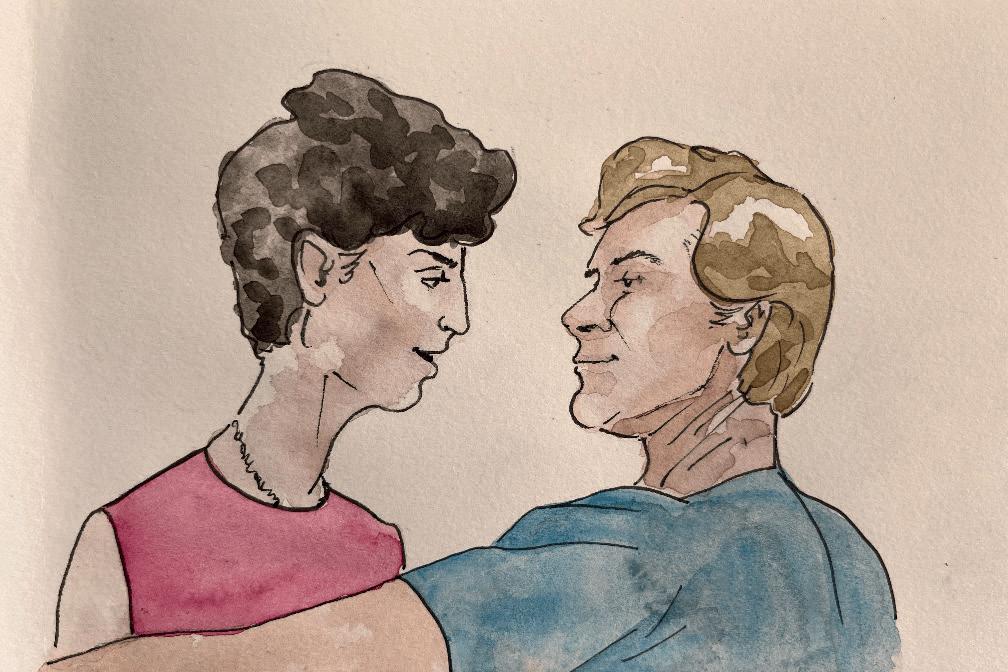
Moving away from romance, summer also brings us stories of friendships and adventure. Stand By Me (1986) sees four friends trekking across Oregon to find a dead body, taking one of their final adventures together before summer ends and they head to middle school. The film is based on Stephen King’s novella The Body, taking inspiration from his own experiences in 1960s rural America. Yet this setting doesn’t undermine the film’s relatability. Stand By Me showcases the kind of mindbogglingly boring experiences of endless summers, sweaty hikes, and games with friends just to make the time pass, stupid conversations and nonsense arguments which still feel like the most important thing in the world.
For those spending their last Easter term at Durham, this film may hit all those points of trying to squeeze every moment out of the sunny days
with your friends, before moving on to the unknown. Though as closely as one could relate to the film, it more than anything provokes an intense nostalgia for late childhood, as the final line in the film so poignantly says: “I never had any friends later on like the ones I had when I was 12. Jesus, does anyone?”
From romantic liberation to life-changing love to final journeys with childhood friends, summer embodies those big transitions in life. As I enter my final few weeks in Durham, I can’t help but feel a real a nity with the cinematic ideal of walking o into the sunset. The summer is reaching its height, and right now all we can hope for is to embrace this season with all the experiences it will bring, a time to reconnect with people, to wander around and waste those days with so few responsibilities, to involve ourselves in arts and culture away from our degrees.
It’s a time to do nothing and everything before setting o onto the next stretch of life, and hopefully we can take some inspiration (or some warnings) from summer films, to guide us on our way.
The war in Ukraine continues. Numbers exceeding 140,000 dead Ukrainian soldiers; numbers near 18 million Ukraine civilians, left without nothing but their homes decimated; and Russian president, Vladimir Putin, and his criminal deportation of Ukrainian children sent to Russia, becoming new ‘propagated’ citizens. Ukraine’s president, Volodymyr Zelensky, however, is continuing to be unaverted by Putin’s advances. And with financial and munition support from the West, Ukraine plans no discourse from unwavering their surge. It’s hard to read this in the news and not think of Russia’s most notorious enterprise in human history: The Soviet Union.
In this article, this history, with a scope too incredibly huge to devour in one piece, will be situated on its music and protest: The Singing Revolution (1987-1991). Under dark and immoral oppression in East Europe, disagreement against any Soviet principal was destroyed, along with those who encouraged it. For nearly seventy years, Baltic voices remained tethered. But as the Russian Empire grew weaker over time, people took advantage of what they had, and used music as a spear into Soviet control.
Music (alongside other arts) was heavily censored by the USSR. After Stalin’s invasion across the East in June 1940, Latvia, Lithuania and Estonia forcibly fell under Russia’s Soviet regime for the next fifty years. Vanquishing and destroying all pre-existing national stature, a new era of living was dispensed across them; involuntary devotion and patriarchy for the Russian state ignited each Baltic flag and legacy to nothing. Despite this dark age and enforced praise to the Soviet religion, surviving civilians were still able to carefully pursue their own nation’s independence through song.
Since 1869, Estonia holds their Estonian Song Festival (Laulupidu) every five years, a festival to commemorate the country’s “national awakening”. The first Laulupidu held under the USSR dictatorship was in 1947. Now performing for the Communist party, repertoire comprised of Russified-Estonian folk tunes to stomping marching regiments
of brass and horn, glorifying war and USSR power (e.g., The Internationale). Despite this strict protocol, the performers themselves still pursued protest, and sung “Land of My Fathers, Land That I Love”, a historic Estonian poemturned song. Although this led to the Soviets prohibiting this song (and others like it) to be performed again, it nevertheless became Estonia’s uno cial national anthem (today’s state anthem).
In 1985, Mikhail Gorbachev was appointed as the new USSR leader, last chief of the Russian Empire. In the following year, Gorbachev amended policy on freedom of speech, introducing glasnost – enabling “openness and transparency”, and freedom of expression and information from Soviet citizens out to the public. The people took advantage of this. With no option of armed resistance, the full use of art, music and literature became their weaponry against the Soviet flag, and was used at full force.
With protests rising, Baltics blended provocative national tunes in their musical fights, rupturing in Lithuania’s massive Rock Marches, entrenching the streets of Vilnius. This revolution also succoured what is one of the Baltic’s significant marks in history, The Baltic Way, 23 August 1989. A peaceful ‘human chain’ demonstration, of approximately two
million, from seniors to toddlers, holding hands all the way from Vilnius, through Riga, to Tallinn. This was The Singing Revolution. From 1987 to 1991, music was wrenching the chains of Russian rule, until the Baltic’s victory on 6 September 1991 when the Soviet chains were o cially broken.
It has been over thirty decades since the Baltic’s independence, and all native and new music continues to stay, carrying scents of legacy for lives lost before independence. However, today it has become more serious for the Baltics to sing their nation’s colours as they prepare what could be Putin at their borders. Volodymyr Zelensky stated:

“The war. What is more opposite music? … The war doesn’t let us choose who survives and who stays in eternal silence.
Our musicians wear body armour instead of tuxedos. They sing to the wounded in hospitals, even to those who can’t hear them. But the music will break through anyway.”
The Singing Revolution was the ability to menace, destroy and rebuild new hope for millions of lives. Now as Russia spreads silence across the nation, people of Ukraine fill those voids with their melody. Ukraine will always keep singing.
The beginning of Easter Term brought with it Durham’s first ever catwalkbased celebration of South Asian style and culture in the form of Kohinoor South Asian Charity Fashion Show (KSACFS).
Saujanya Vinayy, a member of Desi Soc’s exec, very kindly agreed to chat to Style about the behind-the-scenes of the show, and why it is such a welcome presence within Durham’s long-standing fashion scene.
What was your impetus for the show/your motivations for making it happen?
As DU Desi Soc, we’ve always endeavored to be as representative of the beautiful Desi cultures (cultures from the countries in and around the Indian subcontinent) that there are, and we realised that we didn’t have that representation in terms of fashion here in Durham. South Asian cultures are quite well-known for their exquisite fashion and jewellery and extravagance so we felt that it would be the perfect way to celebrate that beauty and share it with Durham.

shows, I don’t think it’s necessarily known for its cultural diversity despite its diverse student population. I feel like it’s one of those things where everyone loves the idea of it and would partake in it but they’re just waiting for someone else to do it first. I’m very happy
Indian designers so that we could honour the cultures and maintain authenticity. Some of the pieces also belonged to our models themselves so we could represent their cultures. As with everything, many of the designs we got fit exactly with our vision and some of them we had to make do with what we got with the styling and alterations.
What do you love most about South Asian fashion?
Personally, I absolutely adore getting all dressed up in the elaborate outfits with the matching jewellery and hair and everything. But what makes South Asian fashion so special is its background where every piece of clothing or jewlery is attached to a rich culture that has an incredible history and significance. I think the variety and elegance you can get from just one South Asian culture along with the fact that the clothes and jewellery alone can tell their own story, is what makes the fashion so stunning. Additionally, the fashion was truly made for every type of person, body and build. It’s truly fashion that doesn’t discriminate.
Looking back, did everything go how you had planned? And how was the planning process?
As Durham’s ‘first ever culture fashion show’, did you feel a certain amount of pressure?
As much pride as it gave us in being Durham’s first ever culture fashion show, I think there was definitely pressure on not only representing the cultures and doing them justice but meeting the high standards that fashion shows in Durham have already set. As one of the three people coordinating the models, looks and outfits, there was show much we wanted to show and also pull o also in terms of the performances and I hope people were able to see the e orts we put into it.
And why do you think it’s taken until now for a cultural fashion show to take place in Durham?
While Durham may be known for its fashion
and proud that we were that first and I hope it’s just the beginning of many more beautiful celebrations of culture and diversity.
Who were some of your designers, and how did their designs coincide with your creative vision?
The majority of our outfits, headpieces and accessories were sourced from India and
I think just like any event, it never goes exactly as planned. There were hiccups along the way whether it was the music for the walks or being unable to find a specific jewellery set for a model, but everything is a learning curve and an experience at the end of the day. The planning process was both one of the most exciting and exhausting things I’ve done. With my other two model coordinators, we decided every single outfit and look along with necessary matching jewellery as with South Asian fashion they aren’t accessories but rather a part of the outfit itself. We also planned styling the models’ outfits on the day as some outfits are one long piece of fabric that quite literally need to be draped on the models and aren’t as simple as putting on a dress. There were trials and errors and lot of it was playing dress up to see what works the best. Something that we planned to be a trademark
While Durham may be known for its fashion shows, I don’t think its necessarily known for its cultural diversity
for the show was the mehendi/alta that all the models and members had on their hands. It’s a skin decoration and temporary tattoo stain of sorts that is common in South Asian cultures, especially when celebrating something.
What was the atmosphere like on the night?
The atmosphere on the night was honestly a plethora of emotions. There was incredible excitement, anticipation and tension. Since so many people had worked so hard, we all wanted to showcase the best we could. As I was backstage in the dressing room, I could only rely on hearing the cheers from the audience to gauge the vibe and I’m happy that the show was received so well and that it received so much love.
Lottie
need to be part of, or identify with, a culture to celebrate it. Both the society and the show exist for the celebration of culture and it’s only possible when people from all cultures partake in it.
Do you plan on making Kohinoor Fashion Show an annual event?
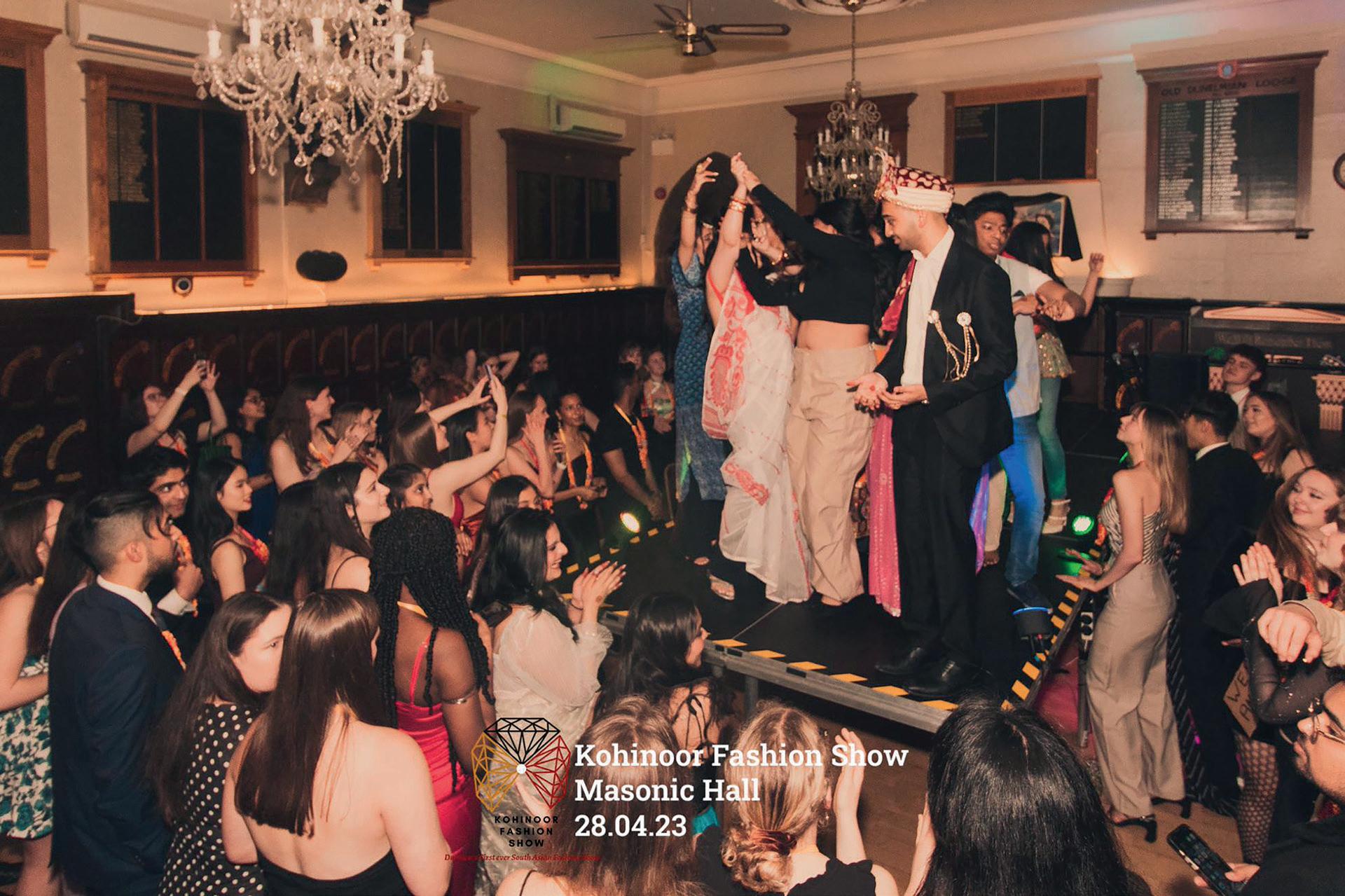
Desi Society would absolutely love to make the South Asian Charity Fashion Show an annual event and personally, I would definitely like to experience it again. Not just for the opportunity to represent and share the culture with everyone but also because there is just so much to showcase and so many endless possibilities.
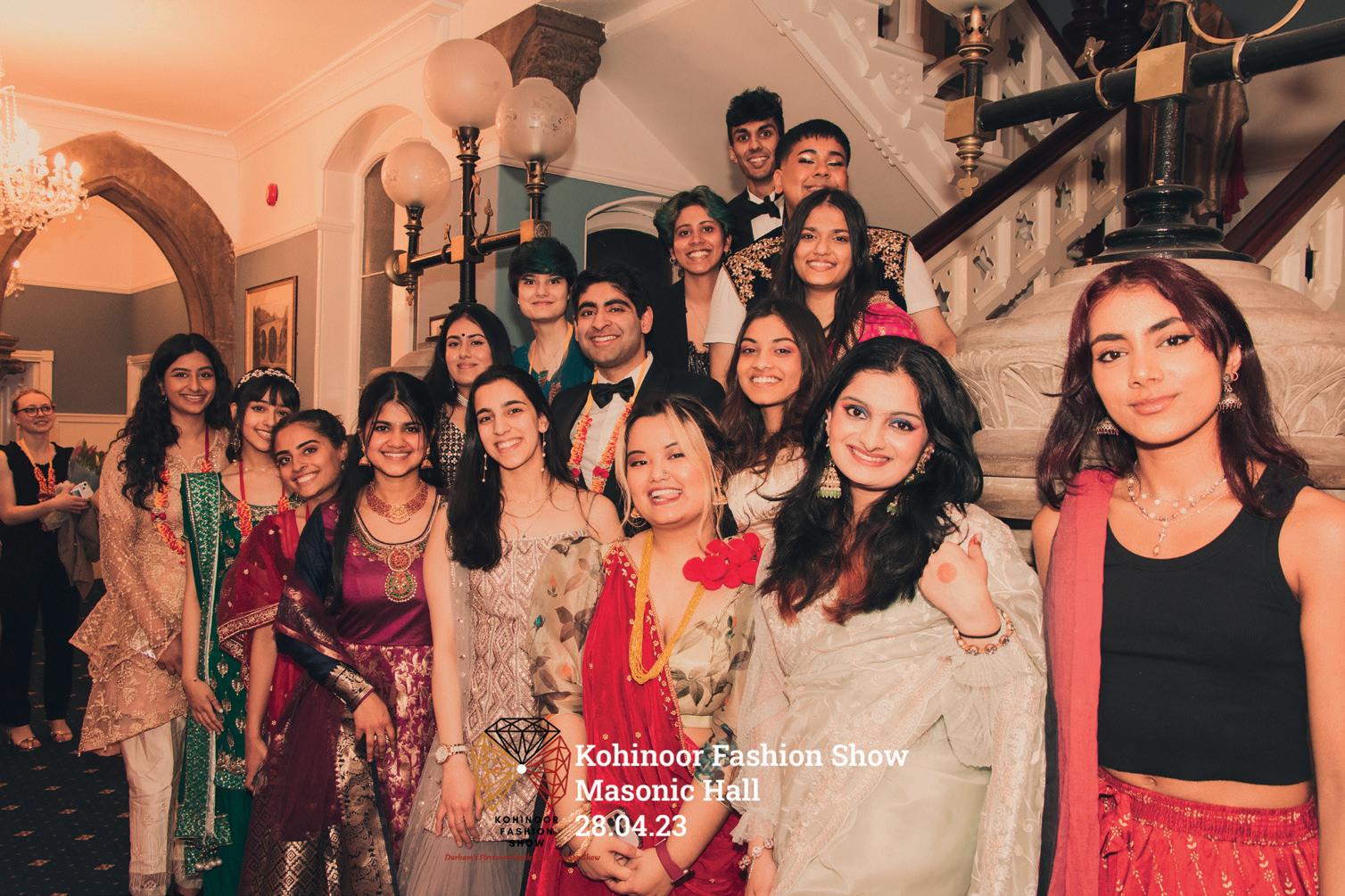
What would you say to anybody wanting to get involved with either Kohinoor Fashion Show or Desi Soc?
First and foremost, you definitely don’t
The show was so incredibly wholesome, breathtaking and empowering! Let alone well organised. It was simply beautiful to see talented and gorgeous people representing so many di erent parts of a culture coming together to display their history traditions and fashion. And all in the name of some great and vital charities, I couldn’t have asked for more!
Image credit: Aathif Anpudeen
There are opportunities to be a part of Desi Soc both as an exec member and just a part of the committee since we hold numerous events throughout the year. For those who’d like to get involved with the fashion show, join the society and stay tuned for news concerning next year!
I must say it was a truly remarkable experience. The event was a perfect blend of fashion, culture and philanthropy. It not only highlighted the beauty and diversity of South Asian culture but also managed to make a positive impact on the community. I would highly recommend this event to anyone who wants to experience the richness of South Asian culture while contributing to a worthy cause.
Theatre is a shining, glimmering form of art. Durham saw an amazing array of student theatre this year – from dazzling musicals to stunning new student writing. It is often easy to forget the amazing work being done backstage. It is only sometimes that you manage to catch a glimpse of the student technicians wearing black, running around ensuring everything runs perfectly. As we near the end of the academic year, I interviewed some of DST’s finalist technicians, as they look back at their time doing tech at university.
How did you get into tech? How did it help you grow as an individual?
People get into doing tech for many di erent reasons, a lot of them with prior experience, but there are many who started from scratch when they arrive in Durham, and build their skills and experience by doing and watching the people around them. Rhiannon Morgan, a fourth year student, shared with us that they started by helping backstage as an actor. “The director suggested I might enjoy production team roles and the rest, as they say, is history”, Morgan shared. “I had no idea what I was doing, but everyone was really helpful, and I had a fantastic time.”
As a technician myself, I think the tech environment in Durham is one of the places where it seems as if there is a catalyst on growing. It is a supportive and helpful environment, and one where you can ‘level up’ your skills by simply watching the others around you. Charlotte Beech, DSTT’s Deputy Tech Manager, shares that one of her highlights was the new student writing musical The Single Lady, where she did a Durham, London, and Edinburgh show, “less than 2 years after first touching a lighting desk”, she shared.
There is a big sense of camaraderie in the tech world, coming from spending hours problem-solving together and supporting each other. Some of my best friends in Durham are people who I’ve teched with. Rhiannon shared with us how theatre tech changed her university experience. “Before I started doing tech, I was very quiet and was quite lonely in Durham. I don’t think my university experience would have been anywhere near as good if I hadn’t got into tech. Not only have I got loads of friends and a lot more self-confidence, I also have much more self-respect than I did when I arrived in Durham.” Dylan Bunyan, DSTT’s Secretary – or lovingly known as the ‘Techretary’, also highlights how his involvement in theatre somehow leads him to “‘ranting about cables to an unknown number of people every week”, but also “helped [his] confidence, and [made him] stronger.”
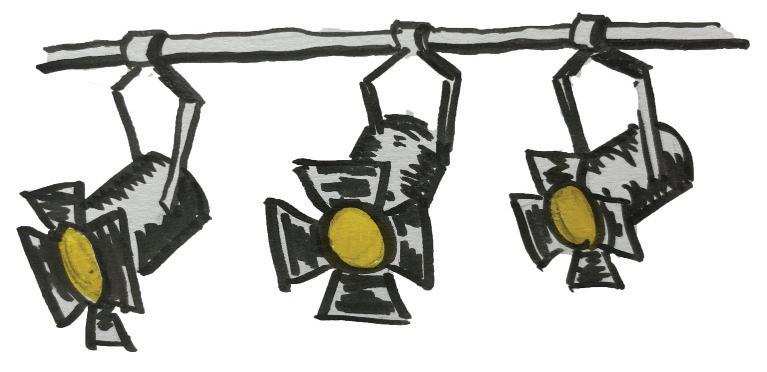
Tech plays an extremely important role in theatre. Not only lights and sound – which of course are integral parts on what makes a show memorable
helps the show runs smoothly, a Deputy Stage Manager who ensures the people in the tech box are getting their cues on time, and the operators who by the end of the show can probably recite the show themselves. It is invisible, yet very important work.
Charlotte shares with us how she thinks tech plays a role; that “the cast are the cake, and [tech] are the icing. We decorate their work and sell it to the audience, turning it from a bunch of very talented people on a stage into the pseudo-realism we know as theatre, through set, lighting and sound (and a plentiful amount of haze when the budget allows it)”, she elaborates.
The more about tech I learn, the better I become at watching and appreciating theatre. Marianne Moore once said that “we do not admire what we cannot understand”, and knowing more about what happens behind the scene helps me appreciate the show that is unfolding in front of me.
What’s your advice for aspiring technicians?
Tech may be a little daunting and intimidating to get into at first, but it is a very supportive environment to learn! When asked for advice, Rhiannon says to “jump right in – you won’t regret it. Everyone’s super friendly and happy to help, answer questions, explain stu and just generally awesome.” It is a learning-by-doing process, and it only takes that little push of courage!
Dylan ends with “Don’t not sign up for things because you think you can’t, but equally be mindful of how much you sign up for because there are a lot of shows, and a reasonable amount of techies. Light op is a great way to get started, you’re probably better than you think, and never be afraid to just ask to shadow or do get in/get out. I love doing get in and get out, and people rarely say no to you helping out, it’s low stakes and you can learn a bunch.”
We wish all our finalist technicians the best, and thank them for their contributions to create memorable shows in Durham!
From leaving school at sixteen to working as a journalist and subsequently starting her own PR agency from her kitchen table at the age of twenty one, Lynne Franks has been at the forefront of the changing societal patterns and has shown time and time again her ability to predict changes. Interview Editor, Lotte Micklethwaite, talked to Lynne about her incredible career and the opportunities coming in our rapidly changing world.
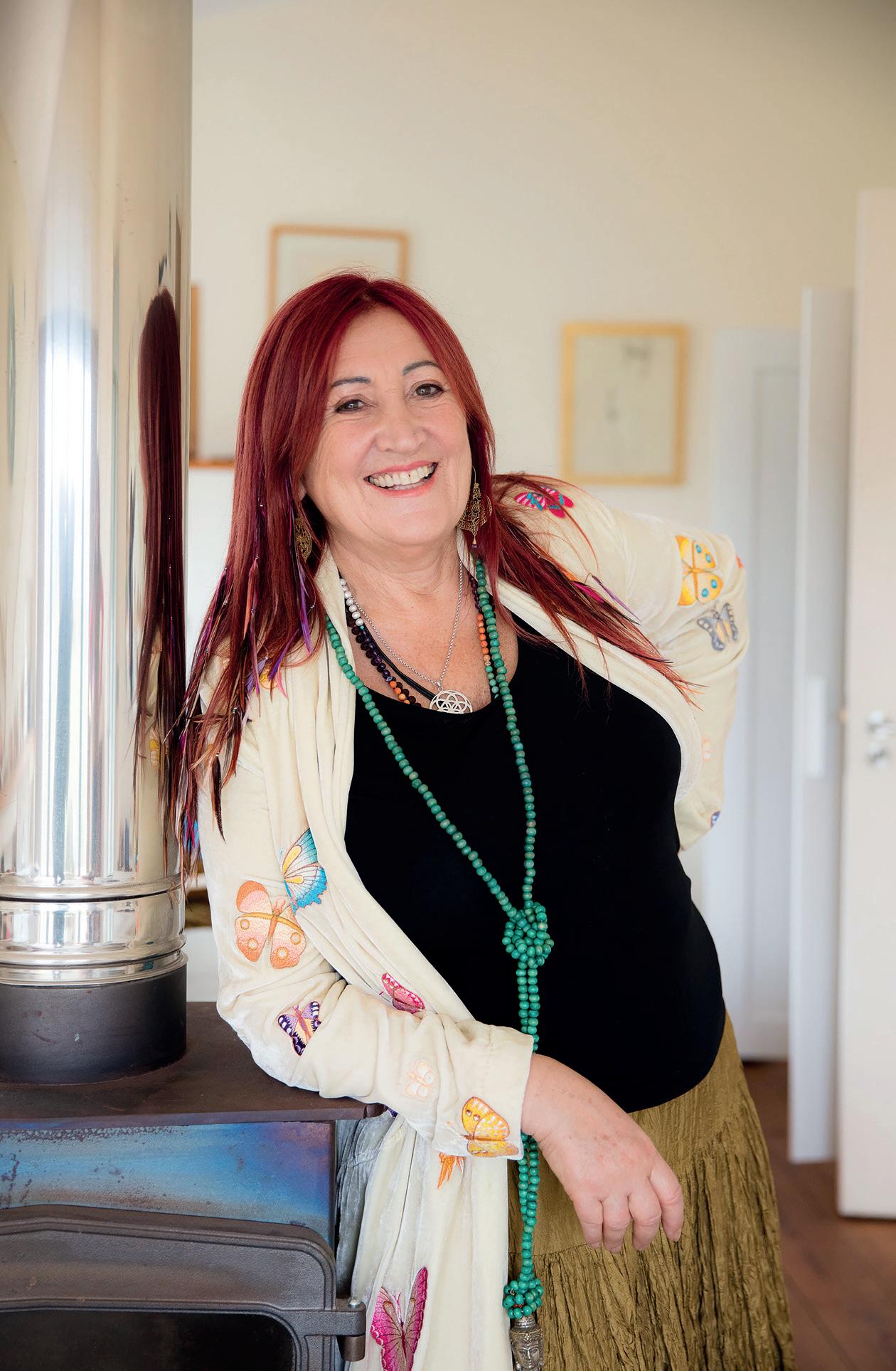
Lynne left school at sixteen wanting to be a writer and journalist. “School wasn’t really for me, so I went to secretarial college and in those days it was feasible that, as a women, you could go from being a secretary to go up the ladder to become a journalist.”
“I very quickly was trained up from being a secretary to be an editorial assistant at Petticoat Magazine, where I was working with many female journalist pioneers.”
After working as a journalist in a few jobs, Lynne moved towards PR. “I got a job by accident at a PR agency through someone I met as I couldn’t get a job on a magazine that I really wanted. And I soon realised that PR was a natural fit for me. After only about 6 months, I met Katherine Hamnett at London Fashion Week and she convinced me to do her PR and start my business. I was 21 at the time.”
Talking about the organic way in which her career began, Lynne expresses “I think it’s still possible to do that – it wasn’t but now it is again.” Even in the last few years, the possibilities have expanded. “We live in such a di erent world and it’s largely to do with social media and technology, meaning it is very natural for young people to become self employed or start their own businesses or have multiple careers once again.”
In discussing the ways in which careers have shifted in recent years making a path like what she took more accessible once again, Lynne highlights the similiarities between her generation and young people. “Baby boomers like me who grew up in the 50s and 60s have more in common with young people now than the lot in between. The way we think about life, how we go about life, travelling, I think we have
a lot a similiarities, far more than either groups usually realise.”
“The influences of the 60s, although we didn’t have social media, were similiarly aligned to those now. We were backpacking, travelling, nomadding. Our attitidues to politics, music, festivals, and life in general, were more open and relates a lot more to young people now.”
The recent years have certainly thrown a spanner into the works and have led many people, in particular the younger generation, to reconsider the structures and systems that were previously just accepted, in a similar way to that seen among youths in the 60s. Lynne reflects on this uncertainty discussing that “there is no stability anymore and we are in a fluctuating world on a monthly, weekly, daily basis. And this change could go really well, or it could be really quite nervewracking and we will find out soon enough which way it is going.”
Acknowledging that there is “a lot of dark stu happening”, Lynne sympathises with all that young people will inherit. “Whether it be climate change, corruption, greed, war, there is a lot of shit going on, espcially for women, LGBT+ communities and minorities. And it is really the role of my generation who have been through it all to be mentors for the younger generation.”
Lynne is passionate about this idea of passing wisdom down, having worked with young people, both in the UK and globally, throughout her career to provide opportunities and help to create a new generation able to better tackle the issues that past generations have not dealt with
e ectively. “It’s what all my generation should be doing, we should stop being selfish and just be there to leave our legacy and teach young people what we have learnt from our mistakes.”
Lynne is hopeful that with the guidance of older generations, younger people will be able to change the existing system. “The whole system needs to change and it needs to change fast because it is all corrupt. Yet, it is evolution not revolution that will do this. Buckminster said ‘You never change things by fighting the existing reality. To change something, build a new model that makes the existing model obsolete.’ This is how change needs to happen and how I think it will happen. I still have faith that we can create something so much better that starts on a community level and incoroporates everyone and all ages in their own roles.”
Which one do you think he is? We mutter amongst ourselves as our new arrivals make their sweaty way up the path. We peer out. No conclusion is drawn. Later when he arrives, he is dressed in tracksuit bottoms, boots and a North Face jacket. I admit when I was told an Andean shaman would be paying a visit to our outpost in the Amazon basin, this was not what I had in mind. To give him credit, his outfit was topped o with a traditionally woven coloured hat, but this did little to quell my scepticism.
In Peru, shamanism is closely associated with ancient Inca traditions. I’m introduced to Paolo, whose main language is Quechua, and told he is part of the Q’eros community. The Q’eros people are said to be the last descendants of the Incas, and the only community left in Peru which continues to preserve their authentic practices. They worship the sun, and live based on the principle of reciprocity with the natural world. It’s hard to deny the allure of these beliefs in a world where natural spaces become increasingly scarce. In spite of my scepticism, I felt an instant sense of tranquillity to our visitor.


Throughout the day, he spoke with us individually, using cocoa leaves to read our fortunes based on our questions. He was reluctant to delve into specific answers, which I found comforting as it removed
was he claiming to be. Rather he was a spiritual guide, in touch with the natural world and all the creatures coexisting within it, humans included.
The ceremony commenced later in the night in which Paolo blessed us, our home, and the natural world. He prayed for our good health and happiness and used di erent objects to represent parts of our lives. We then followed him outside where the wrapped-up package of goods was burnt as Paolo prayed to Pachamama, literally translated as Mother Earth in Quechua. I’m left feeling pensive and honoured to have witnessed such an historic ritual. I was beginning to lose a grip on my earlier scepticism.
has become global, with streams of western tourists visiting these sacred towns to benefit from so-called spiritual healing. This has since been taken one step further, with westerners infiltrating the ranks and becoming selfproclaimed shamans themselves. The irony is, of course, that according to Peruvian myth, one does not choose to be a shaman, it chooses them. And so, springs forth a new form of colonisation.
But there is, sadly, another side to this. Last week I spent the day in Salvación, the nearest town to my current home on a conservation reserve in the rainforest. Whilst exploring the streets, an American man struck up a conversation with me, I presumed because he was similarly surprised to see ‘tourists’ in such far-flung realms. It quickly became evident that this was, in fact, a sales pitch. His toothy grin and thick twang fell short of the sincerity I’m sure he sought to convey. For his monologue’s swansong he presented me his business card which had a list of at least twenty rather abstract words describing his job, amongst them, notably, ‘Amazonian shaman’. I did enough to muster a polite thank you and swiftly performed the ubiquitous throwing away of the card as soon as he was out of eyesight.
It wasn’t until meeting with an Andean shaman this week that I joined the dots. Unfortunately, my chance encounter in Salvación was not an isolated incident, but, in fact, emblematic of a wider problem here in Peru. Since its conception, shamanism has been linked to indigenous communities, but in recent years, its influence
Of course, it is not inherently bad that more and more people around the world are adopting new spiritual perspectives, opting to reconnect with the natural world and open their minds. The danger is, however, that Westerners increasingly seek to replace original shamans, and in doing so, make profit from appropriating their culture. This threatens to commodify and degrade these deeply sacred and mystical traditions, taking them further away from the natural world and instead into the exact industrialised society they seek to withdraw from.
I think back to Paolo’s North Face jacket and see that rather than a sign of his lack of authenticity, it instead demonstrates the sheer pervasiveness of western culture. So, whilst I’m still not overly convinced Paolo could see my future, I am convinced that his traditions and beliefs are worth protecting for the sake of all our futures. At their very core, the Q’eros encourage a reciprocal relationship with nature. Preservation of these beliefs and nature alike is therefore essential if we are to conceive a future in which ecosystems like here in the Peruvian Amazon are to continue flourishing. By adopting, at least to some degree, the beliefs of the Q’eros, there is hope that this future will indeed come to pass.
Whilst I’m still not overly convinced Paolo could see my future, I am convinced that his traditions and beliefs are worth protecting for the sake of all our futures
books@palatinate.org.uk
Keeping up with reading as a hobby during university life is not the easiest. With the amount of reading students do for their degrees, it often becomes cumbersome to make time to read for pleasure. When films, TV shows, TikTok and Youtube are readily available to give you a quick burst of satisfaction and dopamine, why spend the time to read a book from cover to cover? This debate generated our own curiosity and resulted in the Reading Survey, our attempt to discern whether Durham University students still enjoy reading for pleasure. Indigo conducted this survey over the course of a week, with one hundred and seventy four students participating in the online survey. If you participated in the survey, thank you so much for contributing to our research.
Here are the results, and what they say about Durham’s reading habits, preferences and who reads the most!
We found that first year university students reportedly read an average of fourteen books for pleasure each year. New to university, first year students may spend more time enjoying themselves, immersing in university life, while also juggling new responsibilities –leaving them less time to read extensively for pleasure. Second year students are reportedly reading an average of 17 books for pleasure each year - possibly a reflection of the time they have now they’re settled into university life, and aren’t quite so keen to visit Jimmy’s every weekend. Third year sees the number of books read falling to fifteen books as their focus shifts onto academics and future planning, with even less time available to read for leisure. The reading habits of fourth year students take a big hit, reading only eight books a year, almost half of third years, reflecting the rigorous academic e orts that fourth year students must juggle. Surprisingly, postgrads read the most for pleasure out of everyone – an average of a whopping 22 books per year. Older, wiser, and more settled into their habits, postgraduate students are able to carve out more time for reading than their undergraduate friends.
Leading the survey in terms of college are students from Trevelyan college, who are reportedly reading about 27 books for pleasure on average per year! St Aidan’s College takes second place with students
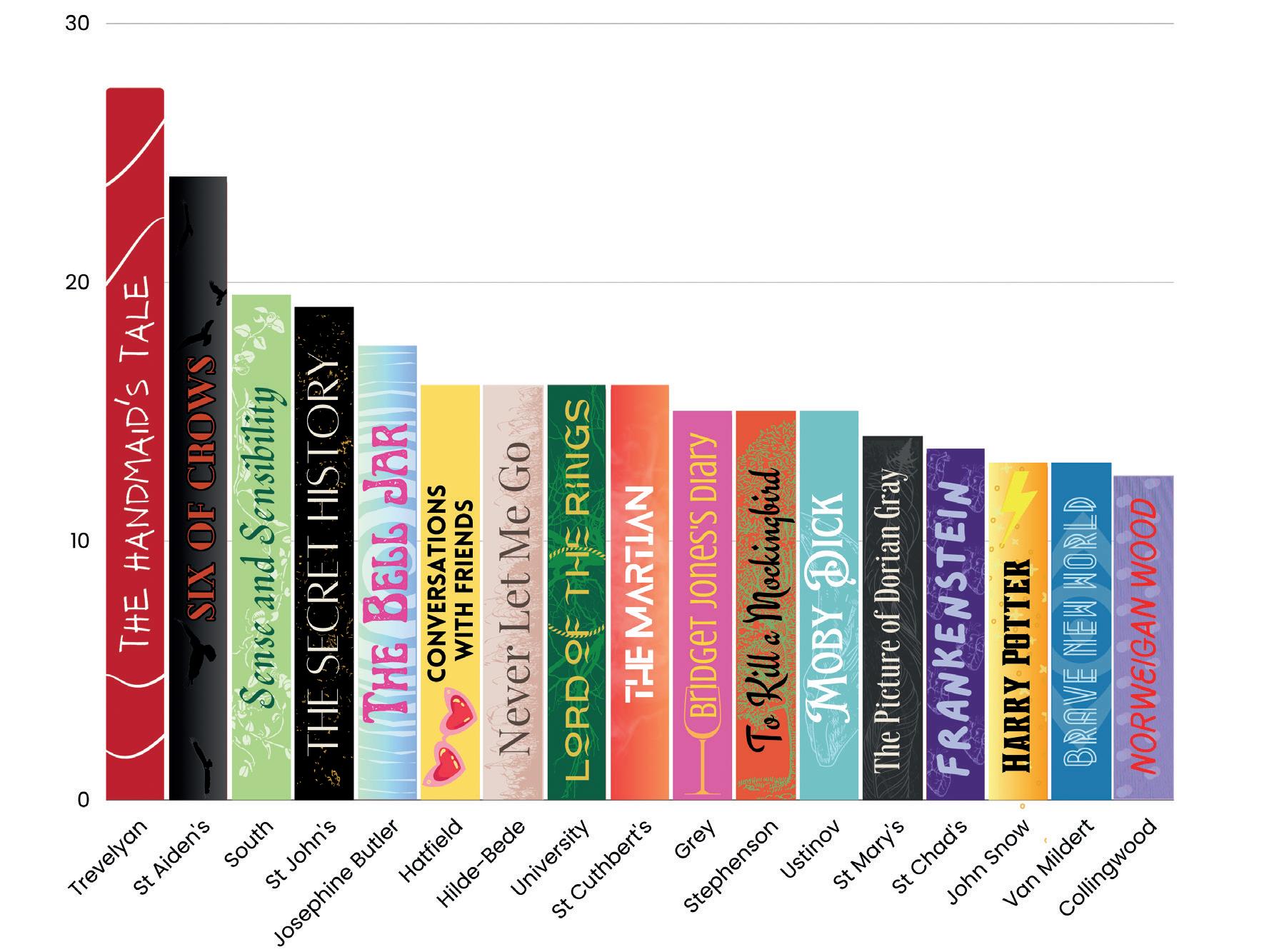
reading around 23-24 books on average. Separate from the hustle and bustle of Durham city, our results suggest that hill colleges are really making the time to read, with South college coming in third place, with around 19.5 books read on average. At the other end of the spectrum, Collingwood students, from a stereotypically more ‘sporty’ college, are reading just 12.7 books on average per year.
If you’re wondering which subject is reading the most for pleasure, you might be unsurprised to learn that English Literature students are leading the pack with an average of 22.3 books for pleasure per year, closely followed by Music and PPE with 20.8. The degrees who reportedly enjoy reading for leisure the least are Accounting, Computer Science, and Engineering - each averaging just 2.5 books per year.
In terms of reading habits, the favourite book genre amongst Durham students is classic novels, although fantasy, nonfiction, and romance were also noted as popular amongst students surveyed. Students also seem to enjoy reading contemporary and literary fiction, as well as historical fiction. There were quite a few mentions of dystopia and science-fiction in the survey!
86% of students prefer reading a physical book, with just 8.7% preferring E-books and 5.2% enjoying audiobooks best. Of those surveyed, Durham students’ favourite places to read are either in bed or outside in the sun. Luckily for them, the upcoming heat wave will provide the perfect reading condition!
It seems as though Durham students favour female authors – Jane Austen was found to be the most popular author amongst those surveyed, with Sally Rooney and Sylvia Plath also receiving significant recognition. An extremely diverse range of novels was suggested for students’ favourite book, but by far the most commonly picked was The Secret History by Donna Tartt. Other popular choices amongst those surveyed include The Bell Jar by Sylvia Plath, Pride and Prejudice by Jane Austen, Norwegian Wood by Haruki Murakami, and To Kill a Mockingbird by Harper Lee.
As we were getting ready to leave we stood in the garden, the speakers mumbled out ‘Summer Wasting’ by Belle and Sebastian and it spoke to the life we had been living. Wasting under the labour of nothingness, wasting under pains to remain ignorant of what lay ahead. God forbid we had to consider these days burning out, the grass fading from under us, when it once stretched infinitely to the horizon. The viaduct which kept Durham alive carried on, carrying the transient residents, in and out, home to home, orientating the flow of the last three years. We carried on, carrying on. From eighteen years old to a lifetime. It felt like that student house could not exist without us, our experiences were what kept it creaking onward, our life was its life. I thought of it as a carcass when we left, beams, bricks, empty space. Nothing to tie together its meaning to the tangible. A vacuum without us. Maybe it just helped me own those fading years, to snap them into palpability.
Our last night out unfolds before us knowing more than we do already. It felt better that way. Maybe we just didn’t want to confront anything in front of us, we didn’t want to look behind, into the eyes we could drown in. That could leave us asphyxiatingly vulnerable, alone on the plains of possibility, bookmarked by beginnings and endings. It was better to just stare straight into the blaring lights, pulsating to the beat of our own hearts, feet ploughing into the dancefloor. Take your friends close, breathe in unison, delight in the certainty of what we have now. For even certainty ebbing is better than none at all.
So we bundle out and the cold pavement takes us into its bosom, it breathes and pulsates below us, carries us to the night ahead. We sink drink after drink, heavy and hedonistic under its influence. The drunkenness begins as a seed in my stomach, it flowers into my lungs, my arms, my legs, the very rhythm of my being slowing down.
We take a break and file outside, shaky hands light Sovereign Superkings, outstretched hands ask for another drag, clouds of smoke arise between our heads. I look into the sky and I see a tinge of orange, I blink and stare ensuring I am not imagining it. I’m not
imagining it. The orange is blazing, its growing and consuming, ripping the life of everything in its path. For a moment only I know. I let my friends ignore it for a second, let them occupy a liminal space between the best and worst moments we could have. Eventually the heat and air are one, we cannot deny it any longer. Durham is burning.
There was a beat of heavy silence, the striking unanimity of all of these strangers flung to the flame. Only one moment before a cacophony of panic erupted burning through the smoking areas, the unattended cherries of cigarettes faded from orange to black, then fell to the floor.
“What the fuck do we do?”
“I think we just watch. There is not a thing we could do”
And its true, there it was disappearing before our eyes, ravaged from the inside out, the inconsequential spark that started this rapture will be consumed in its own butterfly e ect. An e ect that cannot be undone, that we could not fight, we could just watch. The music fought on, huge thumping bass that moments ago was contorting our limbs now only satirised our stillness. Hearing Pitbull as the last three years of your life passes to dust would be a joke to marvel at later. If there was later, if I would ever have these moments again, three years is such a small portion of life. It seems almost inhibiting to all the life I lived, all that was defined by the city collapsing in front of us. The flame is indi erent, it surges on, strength to strength. I remember the talks we were given when we were younger so we wouldn’t incinerate chip pans. That all it took was heat, fuel, and oxygen. It was just the whims of nature. I thought maybe it was better that our house was burned, that it went down in exothermic glory, rather than becoming a vacuum.
Tonight, Durham burns. Tomorrow, London calls.
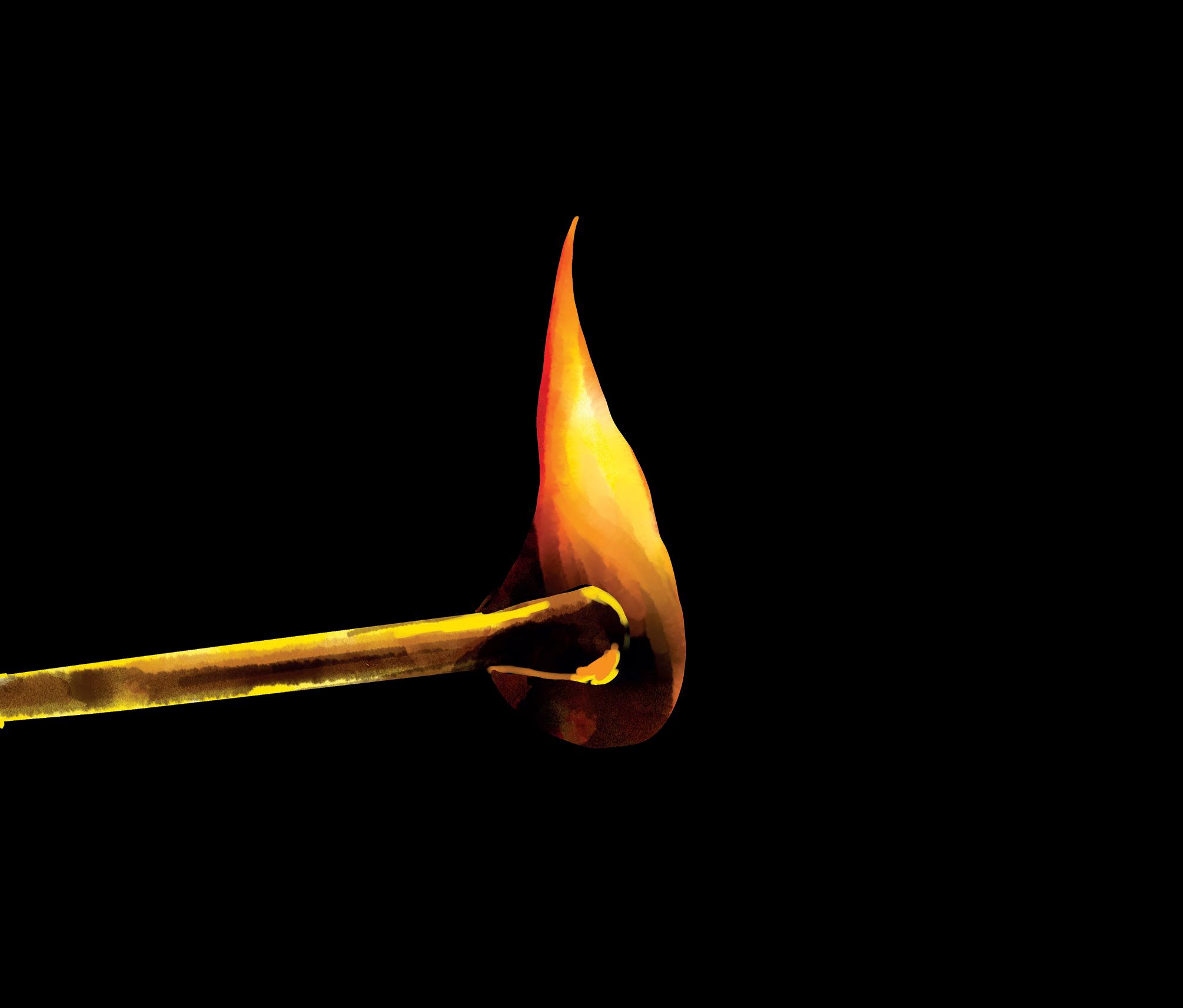
food@palatinate.org.uk

Content Warning: This article mentions diet culture and disordered eating.
If your TikTok recommended page is anything like mine, I can’t go a day without scrolling through ‘What I Eat in a Day’ videos. These extremely popular videos attract millions on views on TikTok, with the hashtag alone (#whatieatinaday) currently boasting over 16 billion views on all social media platforms. Under this hashtag, people share their meals, drinks and snacks that day in short videos, often with a voiceover narrative. Creators of these videos range from the everyday person to athletes, models, nutritionists, doctors and personal trainers –even celebrities like Lizzo have jumped on the
boils down to curiosity. We as humans are obsessed with what other people are doing, and if they are figures we look up to – celebs, our favourite creators, or fitness role models –then we want to know each and every moment of their lives. Their eating habits and choices are a very intimate way of getting a behind the scenes glimpse into their everyday.
Whilst at first glance these videos might be
people o er dinner inspiration and holiday versions, there’s a serious harmful side to them. With the anonymous, unaccountable nature of TikTok videos and the loss of the general context surrounding the person, the lifestyle and eating choices some videos promote can be very damaging to a young impressionable audience who, on the whole, these videos reach. At its very worst, videos show dangerously low calorie days and unachievable lifestyle to attain the body that is shown. It doesn’t take a professional to see how this can lead to body weight and eating comparison and lead to disordered eating habits. For someone struggling with, or recovering from eating
visual.arts@palatinate.org.uk
After its launch in 2019, Durham University’s Student Art Prize has now completed its fourth year. On the evening of Wednesday 7 June, an awards event took place at the Palatine Centre in which the winners of the various prizes were announced, the full list of which can be seen below. In addition, the evening showcased live spoken performances inspired by this year’s theme of ‘Sanctuary’ and specific artworks taken from the shortlisted exhibition, as well as speeches from the organisers of the initiative.
Back in February, I had the pleasure of assisting with the selection process in the first round of judging. Sifting through a total of seventy-seven entries, the various conceptualisations of the theme of ‘Sanctuary’ became evident through a wide variety of mediums. This is something that really stood out to me; the range of media employed by the entrants ranging from mixed media compositions to fabric tapestry to traditional painting and everything in between. However, perhaps most remarkable for its ingenuity in the competition is Zhuoqi Liu’s Preconscious (2023), which is a metal braided headpiece inspired by Freud’s psychoanalytic theory. With its sublime craftsmanship and intricacy it’s unsurprising it won first place in the art category.
The speech delivered by Richard Roberts, the prize’s founding alumni sponsor, was scintillating and enraptured the thoughts, minds, and attention of the packed room, filled with entrants, students, sta , and supporters. Mediating on the theme of ‘Sanctuary’ through initially comedically likening the concept to a recent personal experience of having a hip replacement, the various forms through which the theme could have been interpreted became clear. He remarked on his surprise to the fact no one referenced Durham Cathedral’s famous ‘Sanctuary Knocker’; a clear option for inspiration some might think. The plethora of conceptual, artistic, and personal inspiration was highlighted by Roberts through examples of a number of artworks in the shortlisted exhibition. He commented on the artists’ visible “outpouring of emotion” and “revealing of personal battles” and confessed to being “moved to tears by some of the entrants” artworks.
The importance of the Student Art Prize for the university’s student body was made profoundly clear too by Roberts. With the university’s “enormous stress on academic prowess and sporting ability”, Roberts claimed
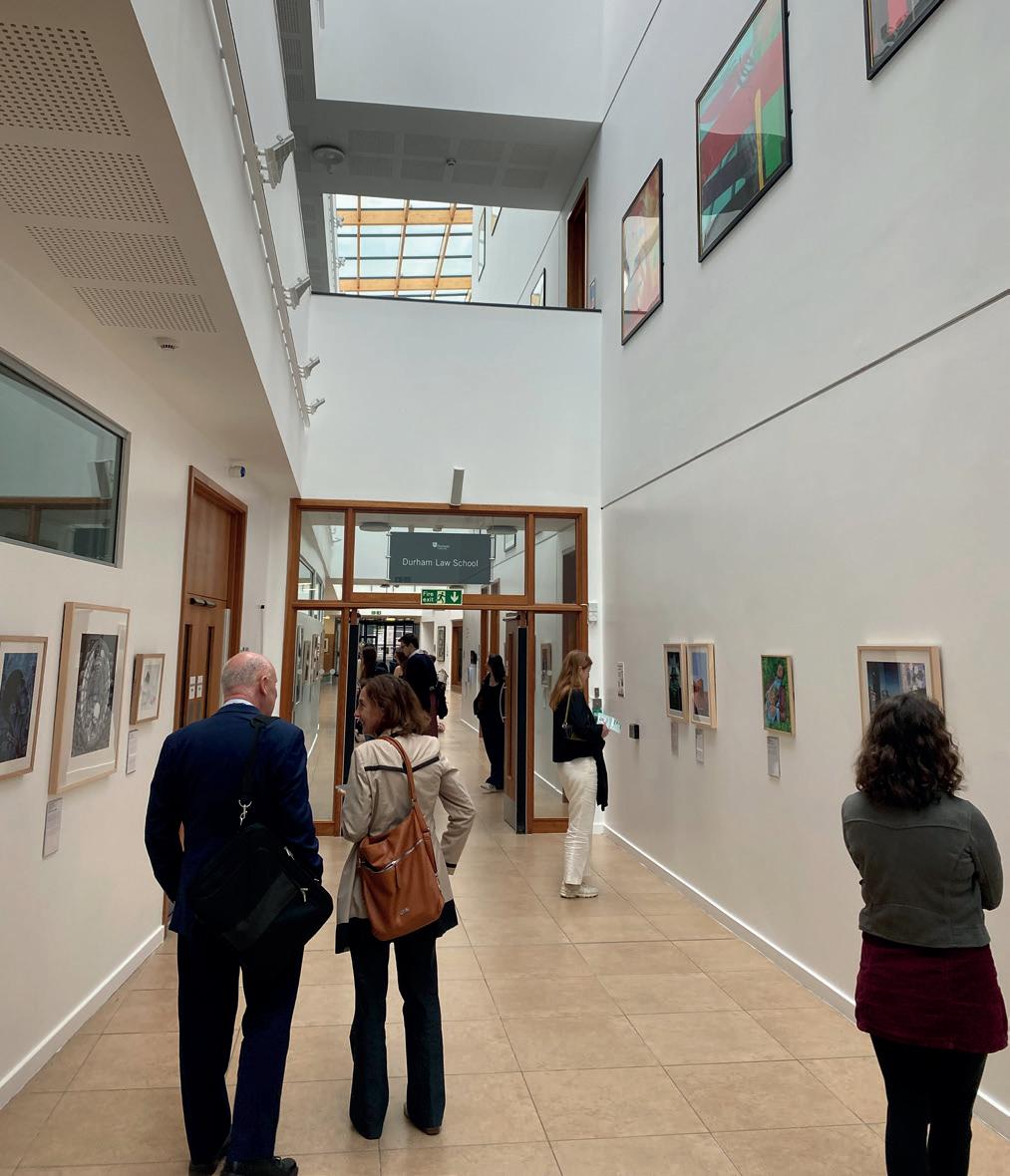
the arts have been put by the wayside by the university in terms of funding and support. He went on to say that the “world has been turned upside down in the last four years since the prize launched” because of various world a airs. Nevertheless, the arts remain as important as ever, particularly in terms of supporting student mental health.
more portrayals of Durham in the entries, but perhaps the lack of this demonstrates the skewed perspective on the collective student experience from an outside stance.
However, the initiative was set up to expand artistic opportunities within the university and to build a new permanent art collection, and this is going incredibly well so far. In a university which doesn’t teach fine art, the Student Art Prize is hugely important as it provides students with the ability to exercise their artistic skills and explore various creative outlets. Alix Collingwood-Swinburn, Durham University’s Curator of Contemporary Arts quite aptly put that the competition is open to those “who may not always see themselves as artists” as the prize acts as “a platform on which [students can] develop creative practices” as well as having their artwork professionally exhibited, and possibly accessioned into the university art collection.
Although there will always be issues surrounding the personal preference intertwined with art and the impossibility of comparing it, the Student Art Prize 2022/23 has proved incredibly popular. From its launch in November to the culmination the following summer, all entrants should be incredibly proud of themselves, whether their works are displayed in the shortlisted exhibition or not. The exhibition will remain open until March 2024 and the Student Art Prize 2023/24 will be launched in November.
Richard Roberts Prize (£1500): Rebecca Rowe - Everyone Has a Sanctuary
With increased pressures in Durham including, but not limited to, financial, parental, digital, and housing pressures, a strong collective feeling of negativity has been provoked. The Art Prize aims to be an antidote to this. Roberts did not keep his qualms to himself regarding the university’s handling of issues including the housing crisis and subsequent “sleepingon-the-pavement-syndrome”, as well as their overlooking of the arts within the educational syllabi. Vice-Chancellor and Warden, Professor Karen O’Brien, who was in attendance, invited to present the prizes looked somewhat sheepish at points and dared not look up from the floor at multiple occasions during Roberts’ mediation on the tattered state of the university arts system. Roberts admitted that he expected
Art 1st Place Prize (£750): Zhuoqi Liu - Preconscious Art 2nd Place Prize (£500): Korina Massicott - Melancholy Medicament Art 3rd Place Prize (£250): Anna Clarke - Terminal 21
Photography 1st Place Prize (£750): Grace Nicholson - Sherburn Road – Bingo Photography 2nd Place Prize (£500): Emma Allison - In Safe Hands
Photography 3rd Place Prize (£250): Mark Pook - Osaka Castle: Sanctuary in the City
People’s Choice Award (£200): Annie Park - It’ll Come out in the Wash
visual.arts@palatinate.org.uk
Rebecca Rowe - Richard Roberts Prize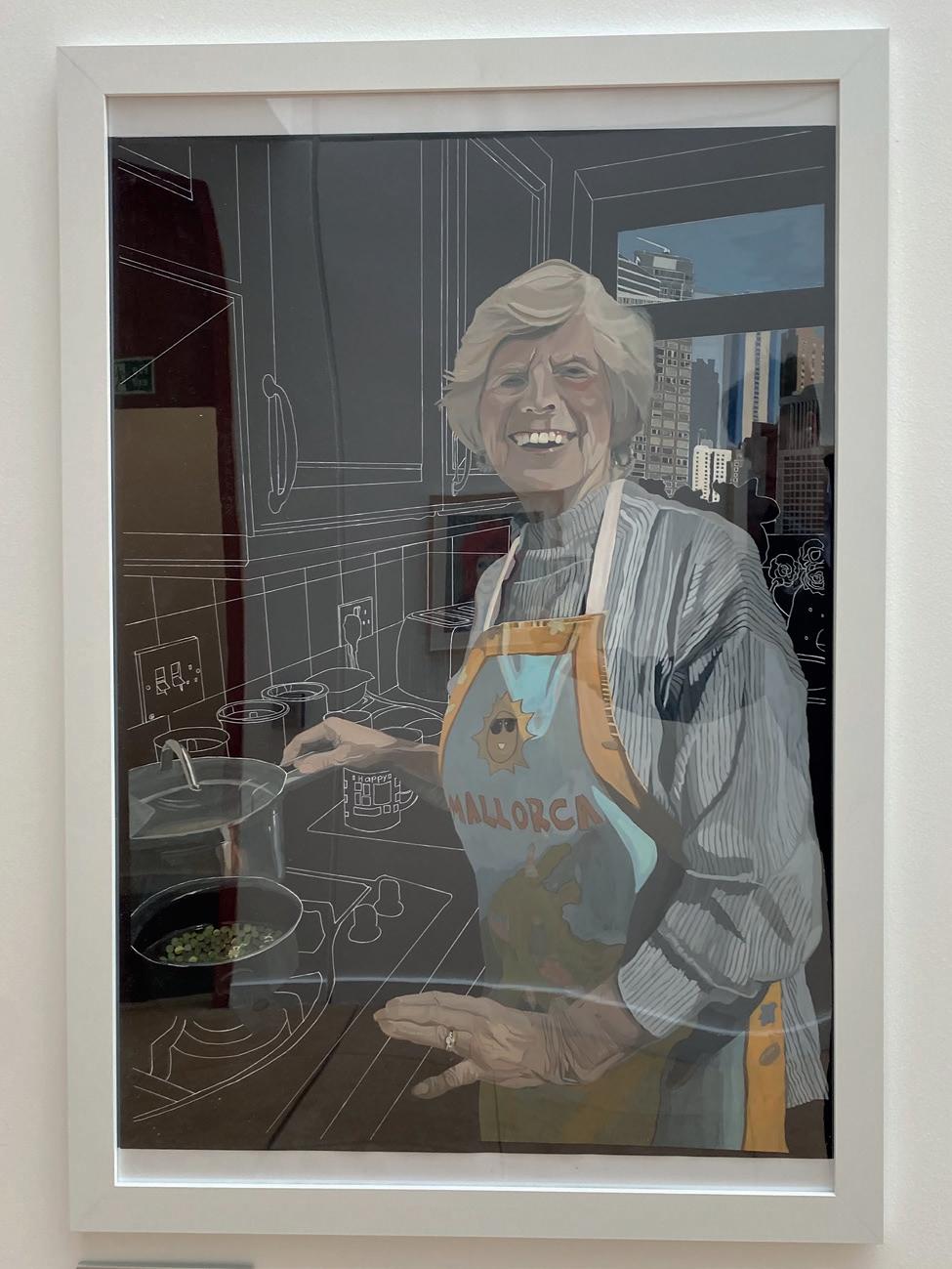
Talk us through your inspiration and artistic process for Everyone Has a Sanctuary.
My feelings didn’t begin as inspiration, it was more of a longing to do something I finally felt good at. I heard about the competition in November, when I was still uneasy about being at Durham. The combination of feeling insecure about job losses at home and money and not feeling a sense of belonging was more di cult to come to terms with than I expected. I couldn’t really find my group and I felt I was behind in my subject. Art was something completely di erent, and something I always thrived in. I had this piece in my back pocketsomething I had completed when I was secure in myself, and it reminded me to create my own new sanctuary now that I am here. I needed to embrace change; I’m still trying to find my sanctuary here and that’s ok.
One of the most striking features of your work is the background of black card; what was the though process and inspiration behind this?
The black card seemed like a fairly obvious choice to me, I had done this sort of gouache on black similarly before in classes, so I was very familiar with this technique. I only want to highlight what is important in this scene - it’s not about where my grandma is, it’s showing you two things right there. The woman making my dinner every Wednesday has always been my sanctuary and has always made me feel safe. And that’s such a lucky thing to have; someone who makes me feel confident to develop and find myself and my own sanctuary.
Your work is undeniably intertwined with links to community, privatisation, and of course Sanctuary; what led you to submit this work?
I wanted to think about sanctuary in terms of what it means to the people around me. At the time I took the photo, we were in the middle of the annual housing crisis and the stress of finding an a ordable student house in a broken system was on my mind regularly. A lot was being said about how this crisis a ects students, but not how it a ected local residents. I wanted to highlight the importance of community and respect when living in a town so dominated by university students. Sherburn Bingo Hall is due to be demolished and replaced by student accommodation, a huge loss to the local community.
To what extent do you think photography is a creative art-form, and should it be categorised di erently from ‘fine art’ in a realm of its own?
Photography is a highly creative art form and can tell stories and evoke all sorts of emotions, but I think in this case it important for the Student Art Prize to recognise photography with its own category. Firstly, because there is amazing talent within the student body and photography is part of everyday life for this generation. Furthermore, the North-East has a rich legacy of documentary photography because of its propensity as a medium to deal with social issues. Recognising photography as a distinct category honours its significance and provides a platform for the unique perspectives and artistic processes it o ers.

How does it feel to win the ‘People’s Choice Award’?
It’s lovely! There are some really spectacular and deserving artworks on display in the exhibition which makes the award feel even more prestigious.
How do you think the subject matter of the painting links into the concepts of intimacy, vulnerability, and Sanctuary?
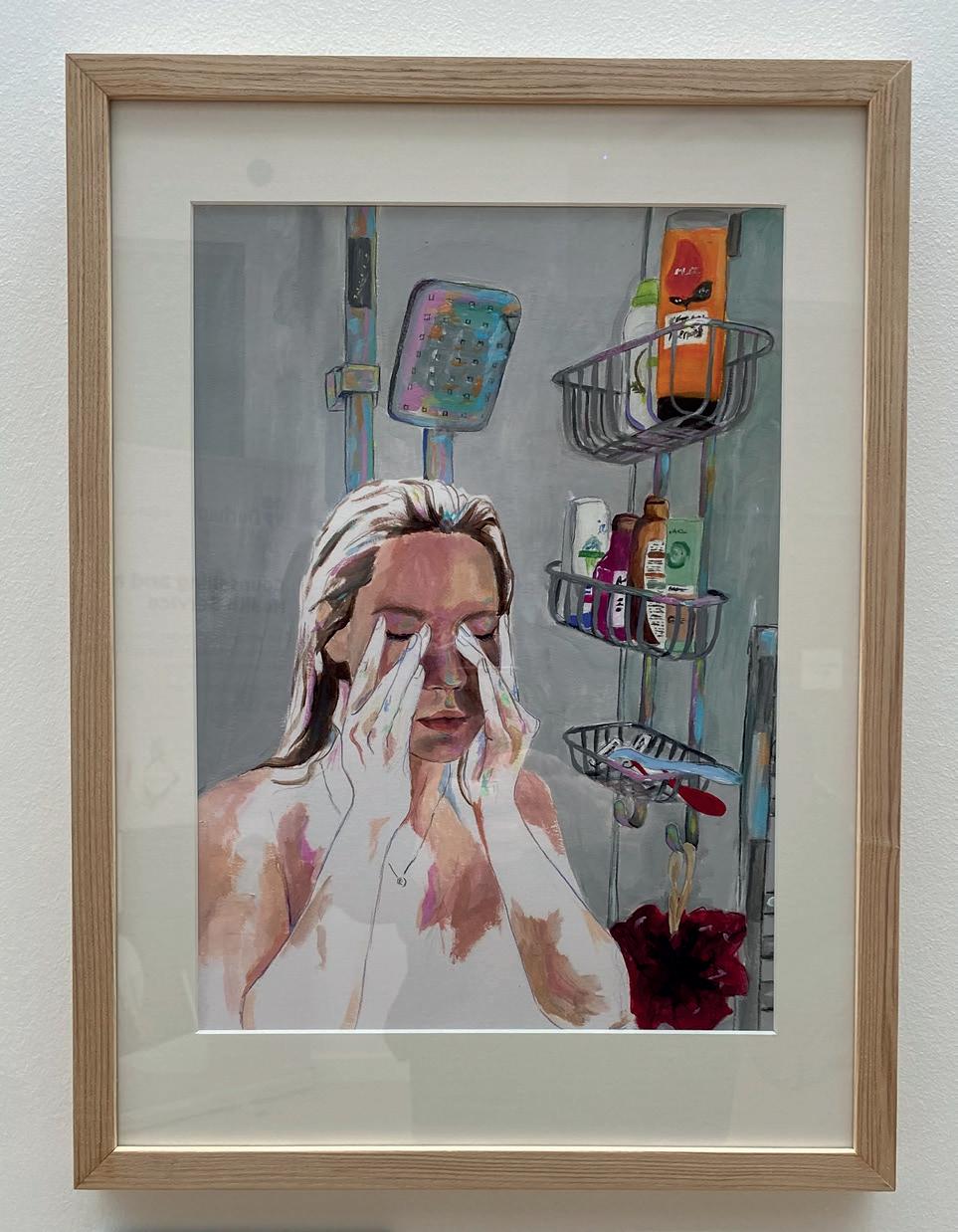
In my painting I wanted to explore the idea of sanctuary at its basic promise of somewhere we feel comfortable, something perhaps intrinsically linked to vulnerability. Sanctuary does not have to be extraneous but can be found in routine and the overlooked spaces we frequent daily. Washing is a quotidian, mindless process but provides a uniquely intimate space for privacy, undisturbed thought, and sequestering oneself. It is a site where external image is not significant, and this is something I wanted to convey in the artwork: the figure being half-finished preserves the comfort and privacy of the space by eschewing full viewer access, also emphasising the irrelevance of a perfect image in a place of vulnerability. The shower is a cathartic space that can always be revisited and consistently provide the feeling of renewal, rinsing both physical dirt and emotional heaviness.
These works and the other shortlisted artworks are on display in the Palatine Centre now (open Monday-Friday, 9am-5pm).
Congratulations to all of this year’s prize winners; it’s a truly stellar shortlisted exhibtion!
photography@palatinate.org.uk
The rich history of Durham is often easy to overlook and forget during our studies at university. So, for the first edition of Photographic Histories and the final print edition of the year, we will explore the most important centre point of Durham: its cathedral.
The story of Durham Cathedral begins not in Durham but in the Diocese of Lindisfarne, where monks fled with St Cuthbert’s body from Viking raids. According to legend, after years of wandering, the monks followed two milkmaids searching for their dun cows until the cart carrying Cuthbert’s body forcibly came to a stop on a peninsula by the River Wear at a site called Dun Holm. The monks perceived this as a call to build a shrine to Cuthbert upon the peninsula that would one day become Durham Cathedral.
The original building was later torn down by the second Prince-Bishop of Durham on the orders of William the Conqueror to build a cathedral. Bishop William de St-Calais laid the cathedral’s foundation stone on the 11th August 1093 but died only a few years later. Bishop Flambard took his place and died just as the walls had been completed in 1128. From construction till today, the cathedral remains structurally the same save for a few additions, such as the construction of the central tower in the thirteenth century which briefly made it the tallest building in England. Of course, this is not the only record that the cathedral held. Bishop Hatfield ordered for the Bishop’s Throne to be built just one inch higher than the Pope’s. The throne remains the tallest in Christendom to this day. Clearly not much has changed about the Hatfield ego.
UNESCO World Heritage now considers Durham Cathedral to be the “perfect monument of ‘Norman’ architecture” in England. The aesthetic principles of Norman England can

be seen when comparing photos of Durham Cathedral with Winchester Cathedral. Starting construction in 1079, it is speculated that both were constructed by the same stonemasons.
The nave’s ribbed vaulting is the cathedral’s greatest architectural element. It clearly draws upon Norman architecture such as Lessay Abbey in Northern France. The nave’s pointed arches are now known to be the largest and earliest in England, standing as a precursor to the Gothic architecture in later periods.
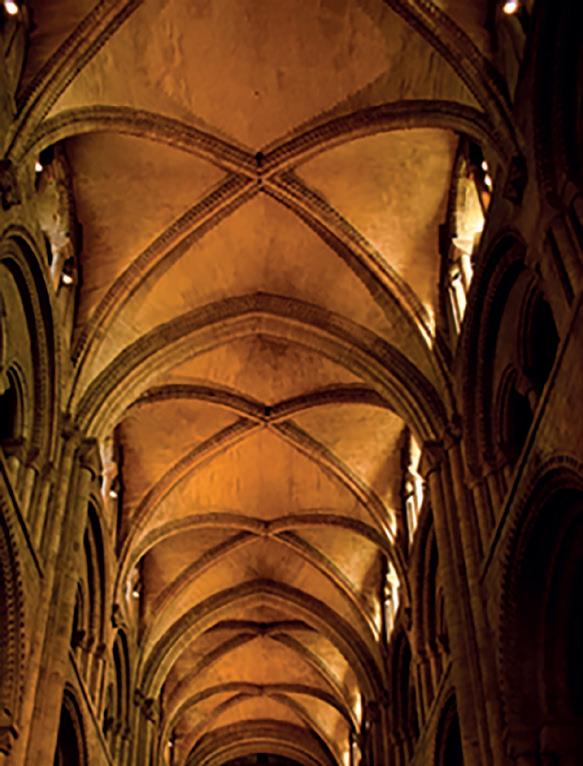
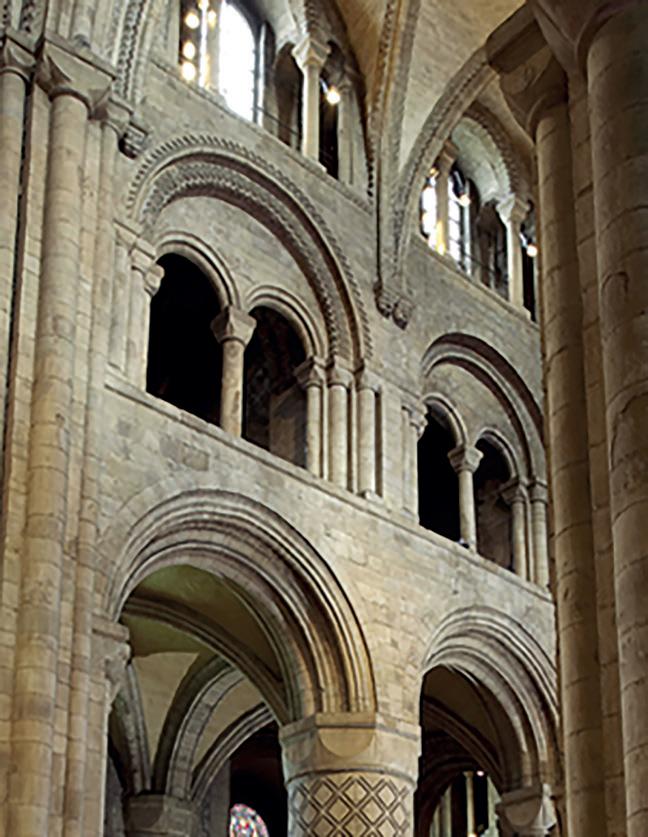
While you surely know that the cathedral briefly featured as Hogwarts in Harry Potter and Asgard in Avengers: Endgame, did you know that it was also the site of a mass grave? In 2013, up to 28 human skeletons were found underneath the cathedral and were dated back to the Civil War. University archaeologists concluded that they were amongst the 1,700 Scottish soldiers who had been imprisoned in the cathedral by Oliver Cromwell after the Battle of Dunbar in 1650.
5,000 Scottish prisoners of war had originally been ordered to march to Durham Cathedral but only 3,000 survived the journey. The soldiers were left in the cathedral for two winters, with most dying from starvation.
It is speculated that the invading Normans had been inspired by the ribbed ceilings of the mosques that they had come across while on crusade in tenth century Spain. Islamic architecture is particularly notable in the Galilee Chapel, with its slender columns and low ceiling being reminiscent of the Great Mosque of Córdoba.


The glory and power of Durham Cathedral were almost brought to an end during Henry VIII’s Dissolution of the Monasteries, with much of its artefacts and wealth handed over to the King. Legend has it that the looters discovered Cuthbert’s body to be uncorrupted, miraculously in the same condition as when he died almost 900 years before. The body was promptly reburied and the cathedral remained as a shrine to the saint, with many believing Cuthbert had saved the cathedral’s future from beyond the grave.
Even after all of this turbulent history, Durham Cathedral is still a place of beauty and worship known across the world. It welcomes thousands of visitors a year and remains the burial place of two of England’s greatest bishops. The cloisters are widely admired and the library is a secret study spot for students who love to make the most of their Durham dark academia experience. So, when you are next in the cathedral, remember to appreciate If you have any photos that you’d like to submit to be used in future editions of Photographic Histories, please reach out and email photography@palatinate.org.uk.